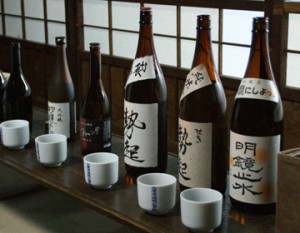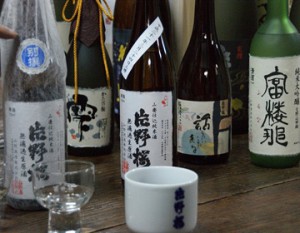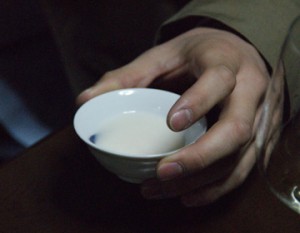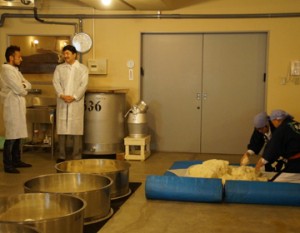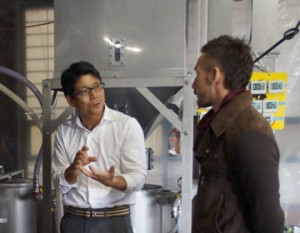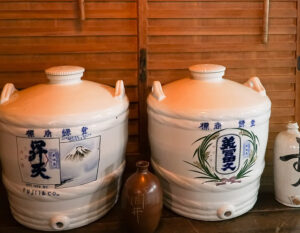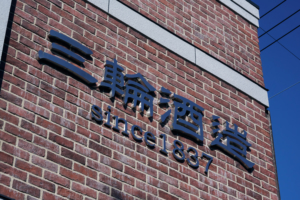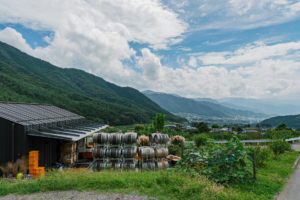Maruishi Brewery is located in Okazaki, Aichi Prefecture. The brewery was founded in 1690 and has a history of more than 330 years as a sake brewery, brewing brands that have been around since the Edo period, including “Mikawa Bushi,” “Tokugawa Ieyasu,” and “Chohyo. Why did a long-established sake brewery with a history of over 300 years launch a new brand of sake?
Brewing sake in Okazaki City, Aichi Prefecture, birthplace of Tokugawa Ieyasu
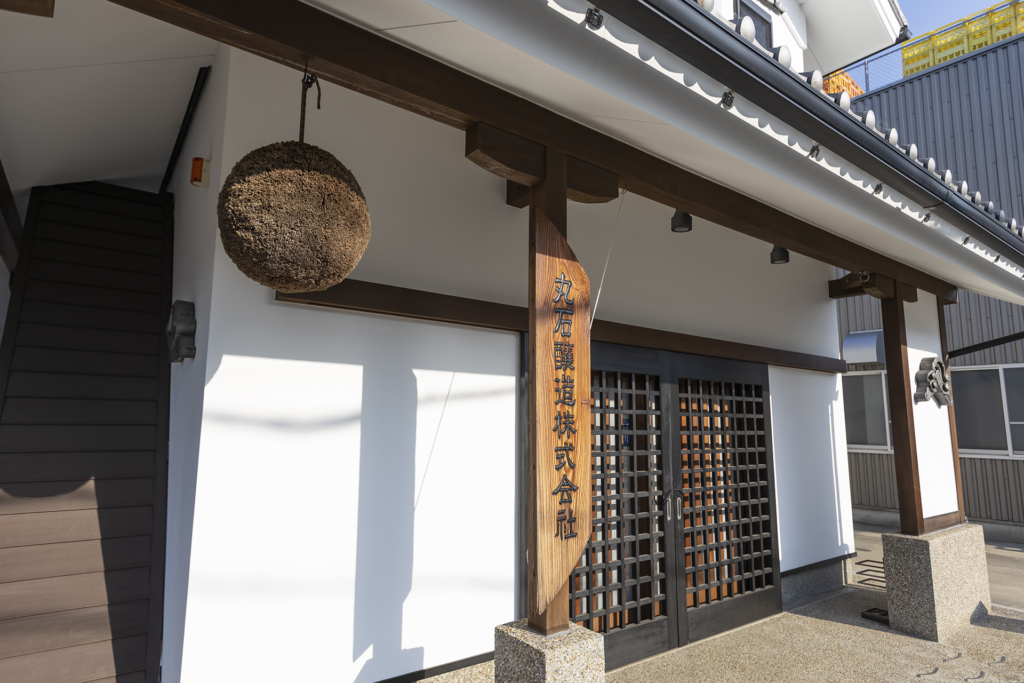
Okazaki City, located in the center of Aichi Prefecture, has prospered as the castle town of Okazaki Castle, famous as the birthplace of Tokugawa Ieyasu. The approximately 20 rivers that flow through the city are tributaries of the Yahagigawa River, which originates in the Central Alps, and have provided water resources to various regions. Maruishi Brewery also uses the subsoil water of the Yahagigawa River in its sake brewing.
Maruishi Brewery was founded in 1690. During the reign of Tsunayoshi Tokugawa, the fifth shogun, the founder of the company built a sake brewery after seeing sake made in the west being transported to Edo (present-day Tokyo). In the Meiji era (1868-1912), the company expanded its business to include miso and soy sauce brewing, spinning, and banking, while also establishing a sake brewery in the Nada region of Hyogo Prefecture. At that time, sake made in Nada was sold as “Chohyo” and sake made in Okazaki was sold as “Mikawa Bushi.
However, during the Pacific War, most of the brewery was destroyed by fire in an air raid on Okazaki. In order to keep the business alive, the company decided to consolidate its operations in Okazaki and renovate the only remaining miso warehouse to focus on sake production.
Five years of trial and error to achieve sake that sells in Tokyo
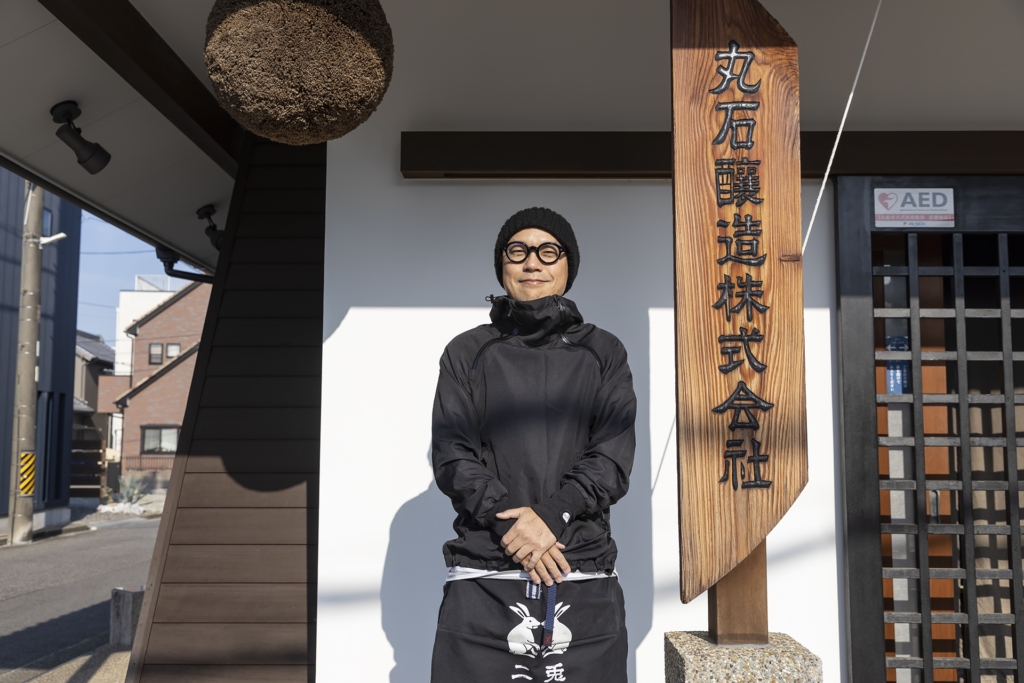
Eiki Fukada, the 18th generation of the brewery’s current president, joined Maruishi Brewery in 2005, traveling throughout Japan to sell sake to specialty stores.
At the time, the brewery produced three brands of sake, including “Mikawa Bushi. Mikawa Bushi” is made with 100% rice grown in Mikawa, Aichi Prefecture, and 99% of the rice is consumed in Aichi Prefecture, making it a locally produced and locally consumed sake. It is the oldest sake produced by Maruishi Brewery, and has a distinctive sweet and sour flavor that goes well with Okazaki’s Hatcho miso. Daiginjo-shu “Tokugawa Ieyasu” is a sake that has won the gold medal 14 times at the National New Sake Competition. Chohomare” is a brand that has long been popular as an everyday sake in Okazaki. It has been served at many festivals, and is also loved as heated sake at local restaurants.
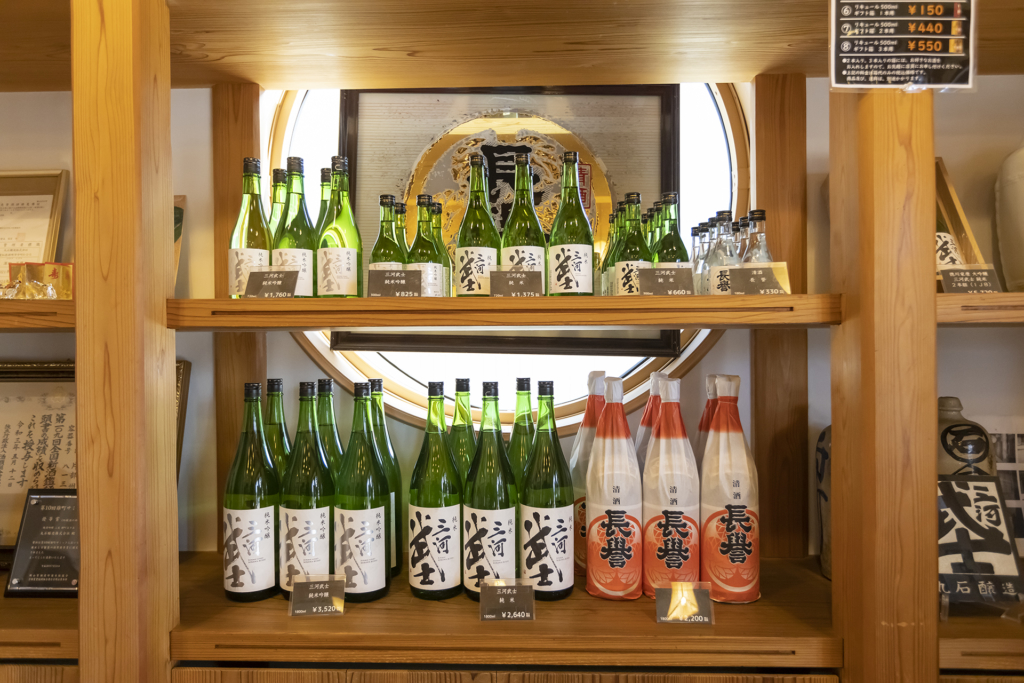
Although widely known locally in Okazaki as a long-established sake brewery, it did not have the recognition necessary to outpace other well-known breweries in Japan when looking to expand nationwide, and the number of stores handling it did not increase as expected.
When we asked sake retailers why this was the case, their comments were mixed. One after another, they voiced harsh opinions, ranging from the name itself, such as “A sake called Tokugawa Ieyasu would not be accepted in Osaka, the town of Toyotomi Hideyoshi,” and “The name Mikawa Samurai makes it difficult for women to buy it,” to the taste, such as “Sake with a strong sweetness is difficult to accept in this day and age. Hearing this, Mr. Fukada’s impatience was not good.
Hearing this, Mr. Fukada’s impatience grew. Based on the dry advice he received from sake retailers, he narrowed his target to the three prefectures of Tokyo, where the population is large and consumption is high, and proceeded to develop a new brand that would be well-liked in the area.
Aim to increase recognition with easy-to-understand labels and names
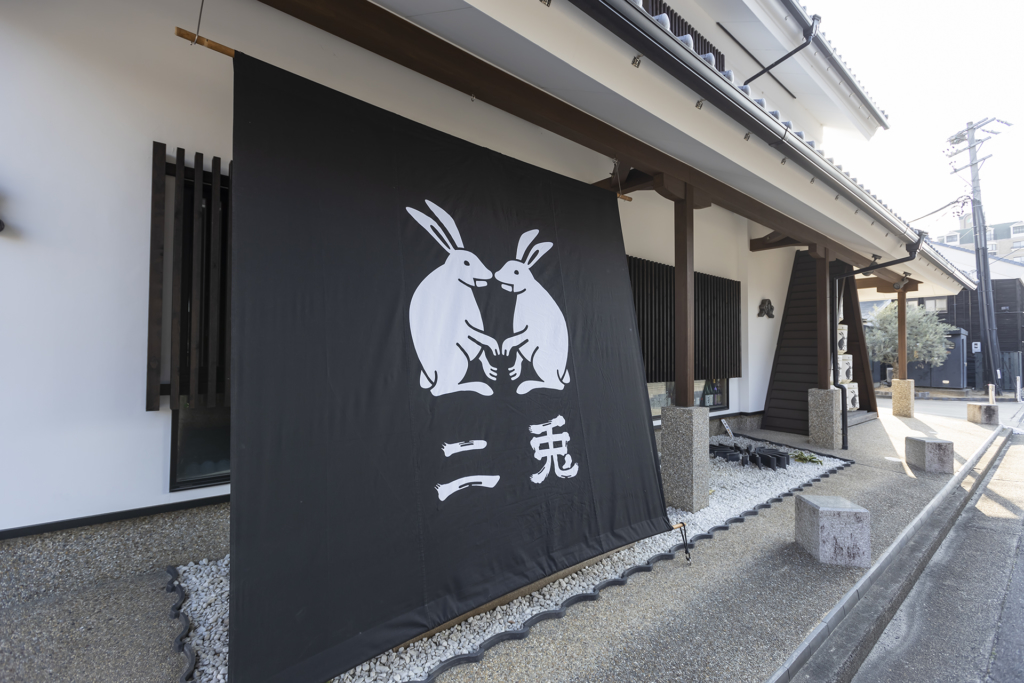
To launch the new sake brand, Mr. Fukada first came up with the idea from a sales perspective.
In order to raise awareness, it was essential to have a name and impressive label design that would be remembered after just one glance. He then thought, “If it is an animal name, it will have an impact and will be memorable even when drunk,” and suggested animals as candidates for the new brand name. Among the many candidates, Mr. Fukada was struck by the name “Rabbit.
If you turn your thinking around, you can only get two hares if you chase two hares, which means that you cannot find what you really want unless you pursue it. This is exactly what we are trying to do with our sake, which has an excellent taste and aroma,” he thought, and named the new brand “Nito” and decorated the label with two rabbits.
The concept is “sake with sweetness, acidity, and a good aftertaste”.
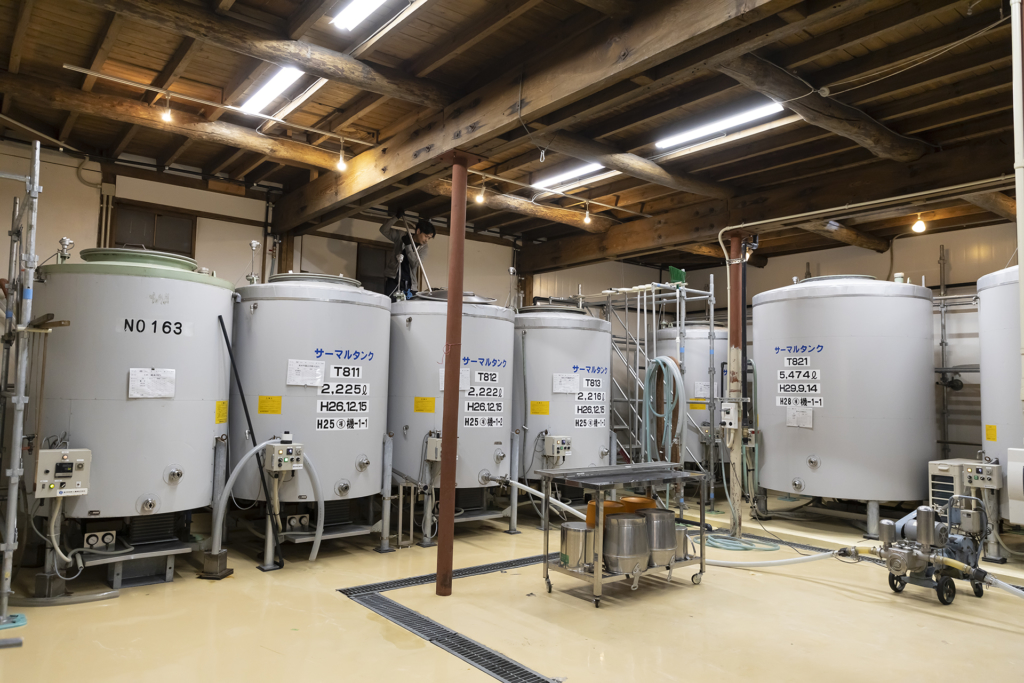
While Fukada-san was in charge of the hardware of the new brand, the person in charge of the “taste,” or “software,” was Shuzumitsu Katabe, who served as the toji (chief brewer). Since the development of the new brand began, Mr. Katabe ordered sake rice from several rice farmers and repeated trial runs using about five different types of yeast. The goal was to create a sake with sweetness, acidity, and a good aftertaste.
At the time the brand was launched, the sake industry was in the midst of a dry boom, but because the brewery was founded in Okazaki, they did not want to give up on making sake that was unique to Okazaki, which has long produced sweet sake to go with dishes using hatcho miso, a type of miso native to the area.
He went through a series of trial-and-error experiments to determine the taste, texture, and throat feel, asking questions such as, “Even if the sake is sweet, if it is finished with a sour note, it will have a crisp aftertaste.
Another improvement over the previous brand was the more stringent temperature control to maintain freshness. After a thorough consideration of how to eliminate the factors that promote aging, namely high temperature and air, the brewery adopted a brewing method that uses thermal tanks, fine-tuning the temperature in 0.1°C increments and fermenting at low temperatures. In addition, the brewery challenged a new style of sake brewing that it had never tried before, such as pressing and bottling while the gas is still dissolved in the liquid to maintain the slightly carbonated state and freshness of the sake even at room temperature.
Not a unique bite, but one that makes dining a pleasure.
Nitoshi accepted the weak points of its own product that were once pointed out by sake retailers, and tried to create a name and design that women would also like, and created a taste that was distinctly different from the old one, while still focusing on Okazaki’s unique sake.
After its release, consumers who liked the label design posted it on SNS, and demand for the sake as a gift for women increased, and awareness of the brand spread steadily among the target group.
With Ni-Rabbit as a starting point, Mr. Fukada was also looking to expand overseas. He wanted to make this brand of sake a wine-like sake that could be opened one bottle per meal. Ideally, a bottle of sake would be opened after a meal,” he said. I wanted to create a sake whose taste changes depending on the temperature and pairing, and whose flavor stands out when paired with a meal,” says Fukada. Sake that is not strong in character, but rather one that can be enjoyed over a meal. He believes that this is the element that will allow the sake to survive.
No change in yeast, but a change in rice to make it different.
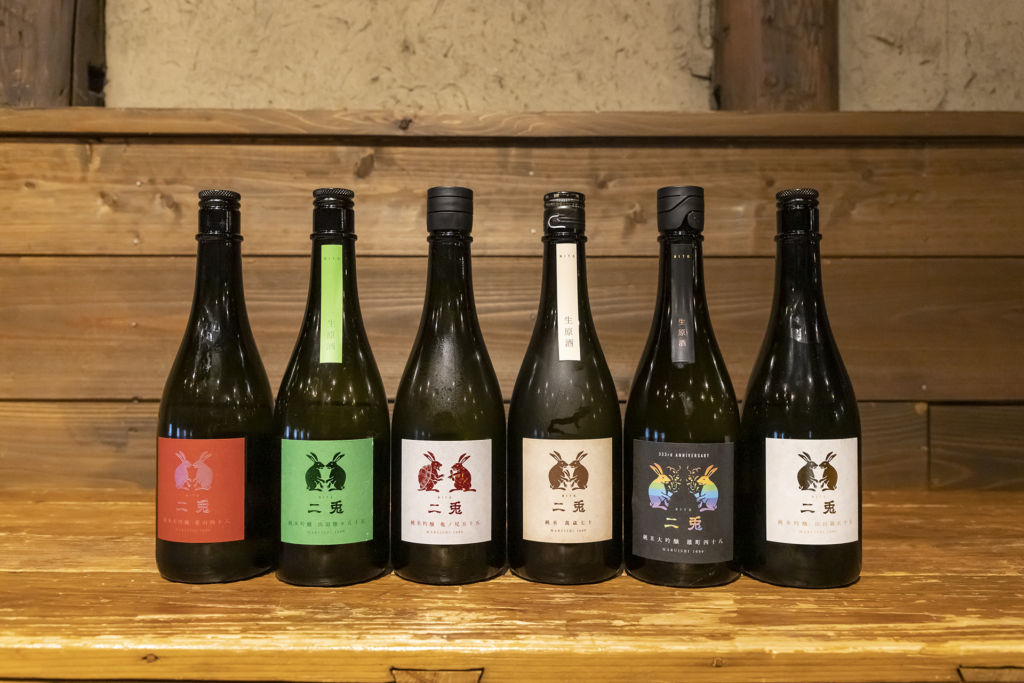
Currently, there are 10 different types of Ni-Utto. The yeast is not changed, but the type of sake rice and milling ratio are changed to express the differences in taste. Changing the yeast can change the aroma so much that it can even seem like a completely different sake. Therefore, by changing the type of sake rice, the flavor is changed without changing the aroma. The sake rice used is Omachi, Yamadanishiki, Dewa Sanbai, Aiyama, and Manzai.
Of these, “Manzai” is the sake rice that Okazaki City offered to Emperor Taisho, and is currently used only by Maruishi Brewery. Even though other sake breweries do not use this sake rice, Nisato believed that the unique Mikawa element was a necessary part of the branding of Nisato.
Aiming to create a sake brewery that will last for 400 or 500 years
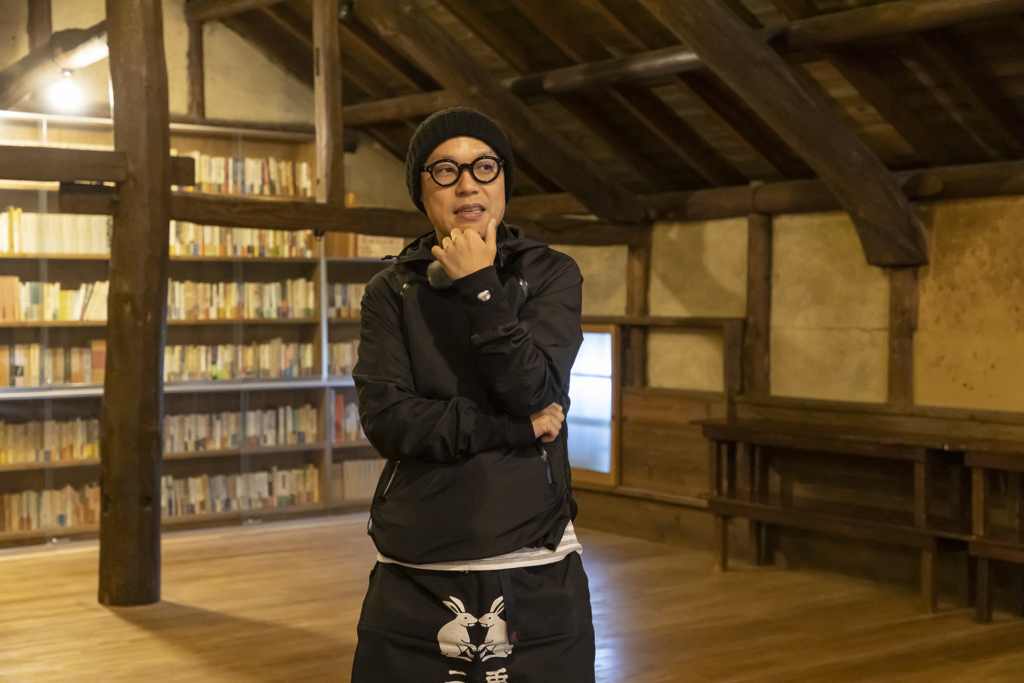
Five years after the birth of Nisato, Maruishi Brewery celebrates 330 years in business in 2020, but the company is still aiming for a brewery that will last for 400 or 500 years. Before I joined Maruishi Brewery, I was a beer and wine drinker, and I wasn’t really interested in sake itself. That’s why I was able to look at the sake industry from a bird’s eye view, both where it is good and where it is lagging behind,” Fukada said. As with anything, it can only remain because there are consumers. In order to do so, he believes it is necessary to respond to changing tastes, fads, and times as they change. Mr. Fukada’s challenge continues, not from the sake brewery’s perspective, but from the consumer’s perspective.




